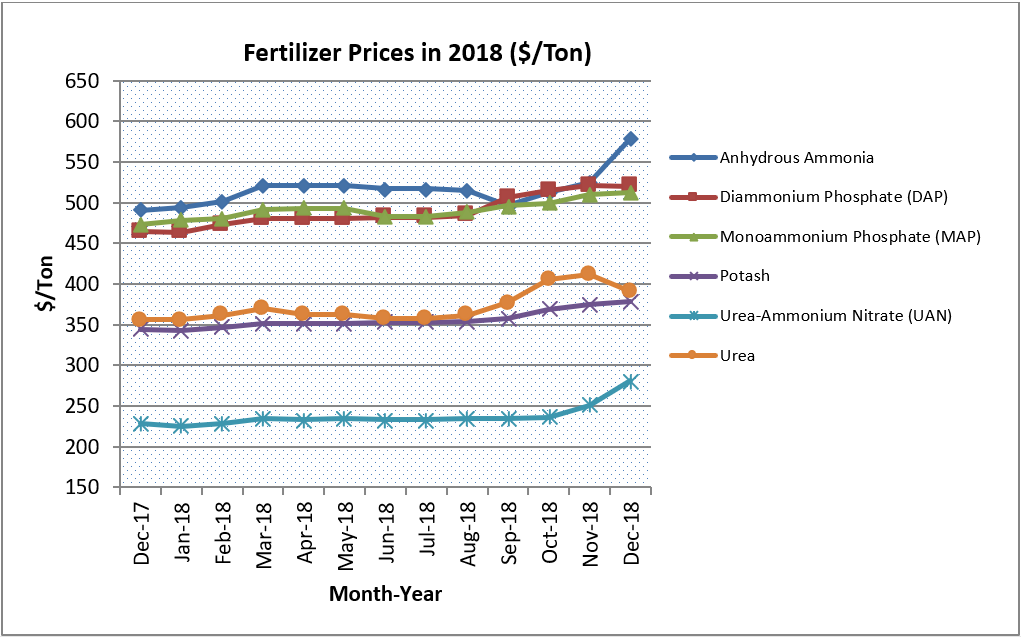Source: Michigan State University Extension
The approximate retail prices for bulk purchases of major fertilizers per ton in December 2018 compared to December 2017, as published in the USDA Illinois Department of Agriculture Market News Report, are shown in Table 1.
All fertilizers were costlier at the end of 2018 compared to 2017. This contrasts with the relatively stable and low prices in 2017. This rising trend, except for urea (Fig. 1), reflects global supply and demand. The prevailing low commodity prices should not lead to drastic cuts in fertilizer. That may lead to unnecessary risks of economic yield losses.
Michigan State University Extension recommends relying on soil testing and realistic yield goals in determining phosphorus (P) and potassium (K) fertilizer rates. Knowing the phosphorus and K critical levels in each field is a reliable guideline. It is worth noting that about 60-70 percent of soil samples tested in Michigan show adequate phosphorus, but only 20-25 percent samples show adequate potassium. Also, consider variable rate applications as a best practice to optimize fertilizer returns. Liming, when necessary, is another practice that can increase net returns to investment.
Refer to MSU Extension bulletin E2904, “Nutrient Recommendations for Field Crops in Michigan,” for additional information on nutrient recommendations.
|
Table 1. Prices for major fertilizers ($ per ton).
|
|---|
|
Fertilizer source
|
December 2017
|
December 2018
|
|---|
|
Diammonium phosphate (DAP)
|
465
|
521
|
|
Monoammonium phosphate (MAP)
|
473
|
513
|
|
Potash
|
345
|
379
|
|
Urea
|
355
|
392
|
|
Urea-Ammonium Nitrate (UAN 28%)
|
228
|
281
|
|
Anhydrous ammonia
|
490
|
579
|
 Figure 2. Fertilizer prices in 2018 ($/Ton). Data source: USDA-Illinois Dept. of Ag Market News Springfield, Ill., cash prices for bulk purchases, granular form unless noted.
Figure 2. Fertilizer prices in 2018 ($/Ton). Data source: USDA-Illinois Dept. of Ag Market News Springfield, Ill., cash prices for bulk purchases, granular form unless noted.